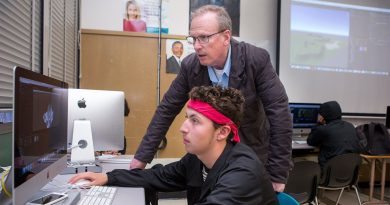Free Assistive Tech Tools That Support Academic Success
These no-cost resources provide tools that help students with disabilities achieve academic success.
One of the many things we’ve learned from the Covid-19 pandemic is that technology has become more and more essential in schools. Although IDEA 2004 and Section 504 mandate that provided services must address the individualized needs of students with disabilities, in reality, when students require support that has a higher cost, schools might not provide it, or they might choose other alternatives that may not be as effective. Assistive technology is a good example of this. Some school professionals may still believe that assistive technology costs a lot of money, which isn’t always true.
With more advances in technology, many assistive technology tools are actually free and easy to use. They are not only able to address the needs of students with various types of disabilities but also enhance their learning. Some of these applications may have already been preinstalled on our devices, while others are free to use online.
Utilize Preinstalled Applications on Available Devices
Office 365 (aka Microsoft Office)/iWork: Microsoft’s suite of applications is free for educators and students to download. For others, it’s free to use online. All you need to do is create a free Microsoft account. If you’re a Mac user, iWork is also free. Simply create a free iCloud account.
Students can use the spelling and grammar check functions available in the applications to check their work prior to submission. Students with reading and writing disabilities can also use text-to-speech to have the computer read the written texts aloud to them and/or speech-to-text to dictate what they want to write.
Microsoft OneNote is a great digital note-taking tool. Students with auditory processing issues or limited fine motor skills, who may not be able to take notes quickly, can ask their teachers for permission to record the lessons and have the recordings sync with their written notes. Students can organize their notes by colors. This is especially helpful for learners who have executive functioning disorders and who lack organizational skills. They can keep all their class notes in one place instead of having loose sheets of handwritten papers.
Adobe Acrobat: Sometimes students receive materials from their teachers that aren’t accessible. They can utilize the optical character recognition (OCR) feature in Acrobat to first convert the files into searchable text documents and then use the text-to-speech feature Read Out Loud to have the computer read the documents aloud to them. This support is crucial for readers who struggle or are visually impaired. Additionally, if students come across any word they don’t know, they can highlight the text and have the application look up its meaning online.
Utilize Free Online Applications
Google Applications: Many teachers know quite a bit about various types of Google applications. Everything you create using them is stored online, can be easily shared with others, and doesn’t take up much computer and email space. Signing up with a free Google account automatically gives you free access to many different Google applications, including 15 GB of free cloud storage space on Google Drive.
Similar to Office 365, most Google applications have built-in text-to-speech and “voice typing” functions. In addition, these applications recognize over 100 languages, such as Amharic, Lao, Bengali, and Tamil, which means that English language learners with disabilities can utilize these features in their preferred language.
Padlet: Padlet is a real-time online collaborative platform that has gained a lot of recognition since the pandemic. Students can use this cloud-based software during group work to keep track of everyone’s ideas and how they would like to structure their project. They can also present their final work as virtual bulletin boards.
Students who need additional help with writing and organizational skills may find this tool especially helpful, since it can be used as a prewriting tool to brainstorm ideas and receive feedback from teachers or peers prior completing a writing assignment at school and/or at home. The background of each Padlet can be changed to suit the theme of their work. Anyone with a free account can create a maximum of three Padlets.
Utilize Free Browser Extensions
BeeLine Reader: Besides the use of textbooks, teachers nowadays utilize many online reading materials. Websites that are text-heavy and dense can create additional challenges for students who already struggle with reading. BeeLine Reader is a helpful browser extension that automatically adds color to the digital text, improves reading ability, and keeps students’ focus.
Google Translate and Google Dictionary: Google Translate and Google Dictionary are two helpful browser extensions that English language learners with disabilities and students with reading disabilities can utilize. When students come across words they don’t know on websites, they can highlight the words and have the extensions translate them in their preferred language, find out their meaning, and determine how to pronounce the words.
Lucidchart: Lucidchart has its own web-based diagram application and a browser extension that students can use for free. Students can share charts and diagrams with their classmates or group members. They can also use it as a graphic organizer to brainstorm ideas before writing. For a free Lucidchart account, students can create a maximum of three editable Lucidchart documents. Free templates are also available to use.
It’s important to note that an assistive technology service or evaluation must be conducted before determining which tool is best for students to use. It’s mandatory for schools to provide these resources to teachers and students as well as training on how to use them effectively. Students’ families also require training so that they can support the consistent use of assistive tech at home. If access to specific equipment, such as an iPad or augmentative and alternative communication devices, is needed, schools are obligated to provide the equipment for use both at school and at home.
Source: https://www.edutopia.org/article/free-assistive-tech-tools-support-academic-success




